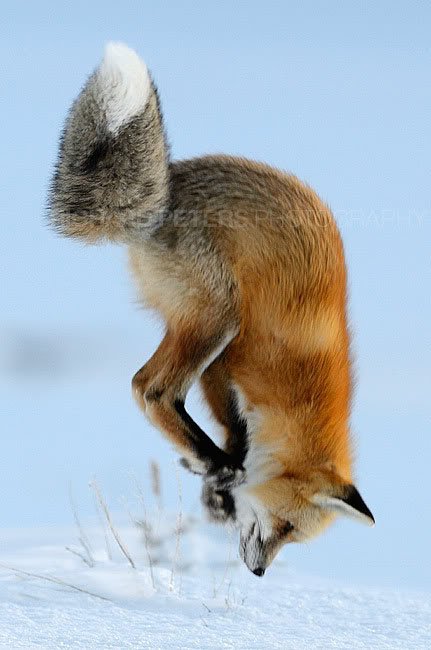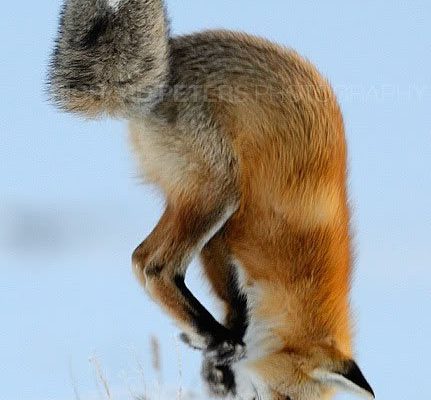
Imagine the red fox as a savvy chef in a vast kitchen, scavenging for ingredients. Depending on the season, the chef chooses different recipes, making the most of whatever is available. Red foxes operate in a similar way, adjusting their hunting methods and diet to match the resources around them. Let’s dive into what these crafty animals eat and how they catch their prey.
What Do Red Foxes Eat?
Red foxes have quite the varied diet, which is part of what makes them such successful hunters. They are often described as omnivores, which means they eat both animals and plants. Here’s a rundown of what’s typically on the red fox’s menu:
- Small mammals: Red foxes love to snack on rabbits, rodents, and other small critters. It’s like having a favorite dish that they keep coming back to.
- Birds: They’re quick on their feet and can catch birds with surprising ease. Think of them as the fast-food workers of the animal kingdom, always on the hunt for a quick meal.
- Fruits and vegetables: When meat is hard to find, red foxes aren’t picky. They’ll munch on berries, apples, and even roots to fill their bellies.
- Insects: During summer, insects become a staple. You might find them digging through the grass for crickets and beetles—kind of like a forager at a farmers’ market.
This diversity in their diet gives red foxes a significant advantage. They can survive in various habitats and adjust their eating habits based on seasonal availability. If you’ve ever wondered how they make it through tough times, their adaptable eating is the secret!
Hunting Techniques of the Red Fox
Now that we know what red foxes eat, let’s chat about how they hunt. These cunning animals have developed several strategies to catch their meals. Their methods are nothing short of fascinating!
One of their most famous hunting techniques is called the “mousing” technique. Picture this: a fox crouches low, ears perked up, listening intently to the sounds of the ground below. When they hear a potential meal, they leap into the air and pounce! This technique is not only effective; it’s also a dazzling display of agility and precision.
Another approach is stalking. Red foxes are patient predators. They’ll slowly sneak up on their prey, taking careful steps to avoid detection. It’s like watching a suspenseful film, where the tension builds until the climactic moment when they spring into action. This strategy is often used when they’re targeting birds or small mammals hiding in dense underbrush.
Lastly, they’re also known for scavenging. When fresh prey is hard to come by, red foxes will search for leftovers from larger predators. This is a smart way to ensure they still get a meal without wasting energy on a full-blown hunt.
Seasonal Changes in Diet
Interestingly, the diet of the red fox changes with the seasons. Each time the calendar flips, they adjust their hunting and foraging methods.
In winter, food is often scarce. Red foxes might focus on hunting small mammals like voles and rabbits, which are easier to find when the snow covers everything else. Even a little snow can help them track scents and hear movements beneath the surface, making their hunting easier.
During the spring and summer, when fruits start to ripen, red foxes add a variety of berries and insects to their diet. This time of year can be like a buffet for them. They’ll consume whatever is ripe and available. You might even spot them with a mouthful of berries, looking quite pleased with their harvest.
As autumn rolls in, they often shift focus again. This is when red foxes often hunt for small animals preparing for winter or forage for fallen fruit. It’s nature’s way of ensuring these clever creatures are ready to tackle whatever the cold months bring.
Social Hunting Behavior
You might be surprised to learn that red foxes can also exhibit social hunting behavior. While they are typically solitary animals, during certain times of the year, they may work together to hunt more effectively. This group dynamic can happen when families are involved, especially when raising pups.
During the breeding season, fox parents often collaborate to ensure their young are fed and healthy. This cooperative effort can increase their chances of successfully catching larger prey. Imagine it like a well-coordinated team working together for a common goal, each member playing a role in achieving success.
In addition to hunting together, red foxes sometimes share their meals with their young. This nurturing behavior helps teach the pups essential skills, ensuring they learn how to hunt as they grow up.
The Role of Red Foxes in Ecosystems
While red foxes are clever predators, they’re also vital players in their ecosystems. By keeping populations of small mammals in check, they help maintain a balance in nature.
If red foxes were to disappear, we could see a dramatic rise in rodent populations, which could lead to overgrazing and other environmental issues. Their role as predators helps control these populations, ensuring that ecosystems remain healthy and vibrant.
Furthermore, red foxes also contribute to the spread of plant seeds through their foraging habits. When they consume fruits and berries, they often leave behind seeds in their droppings, helping new plants to grow. It’s a beautiful cycle of life, where each creature plays a role in nurturing the environment.
Conservation and Human Interaction
Red foxes often come into contact with humans, especially in urban settings. While some people enjoy spotting them in their backyards, others may view them as pests. Understanding their behavior and role in the ecosystem can help us coexist more peacefully with these fascinating animals.
Historically, red foxes faced threats from habitat destruction and hunting. Today, they are more adaptable and can thrive in various environments. However, they still require conservation efforts to maintain healthy populations.
Being aware of how human activities impact their habitats can go a long way. Simple actions, like maintaining green spaces and supporting wildlife-friendly policies, can help these clever creatures continue to thrive.
Final Thoughts on Red Foxes
The red fox is a remarkable creature that embodies adaptability and cunning. Their diet and hunting strategies reveal not just how they survive but also how they contribute to the environment around them. By understanding these clever animals better, we can appreciate their role in nature and learn to coexist with them more harmoniously.
Whether you see them darting through a field or lounging in a backyard, take a moment to appreciate the complexity of their lives. After all, red foxes are not just survivors; they are a vital part of the tapestry that makes up our natural world. Next time you catch a glimpse of a red fox, think about all the intriguing strategies and adaptations that help them thrive in a world that’s constantly changing.

